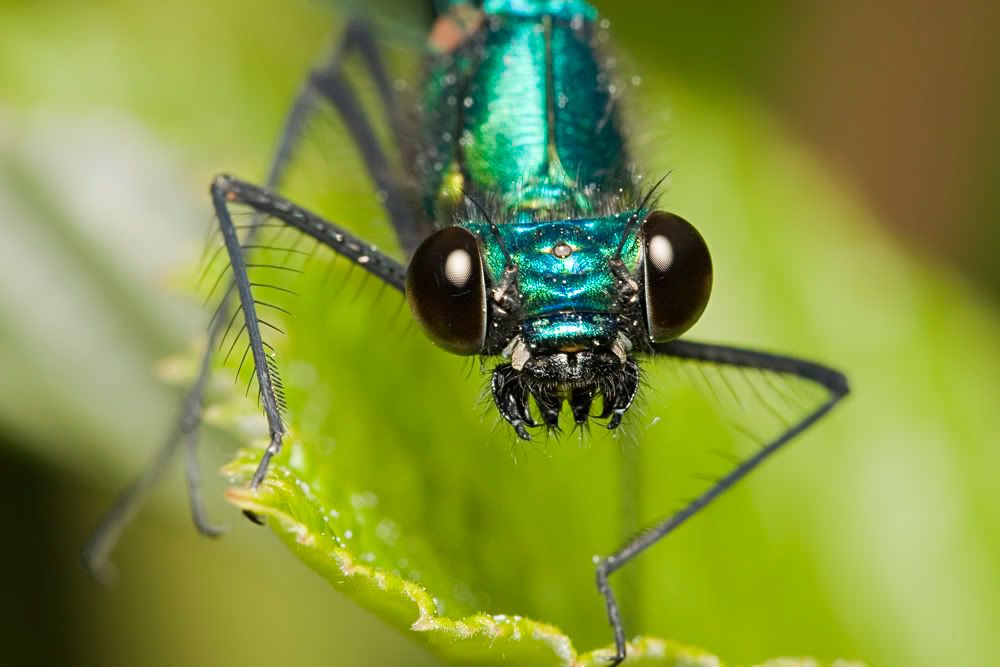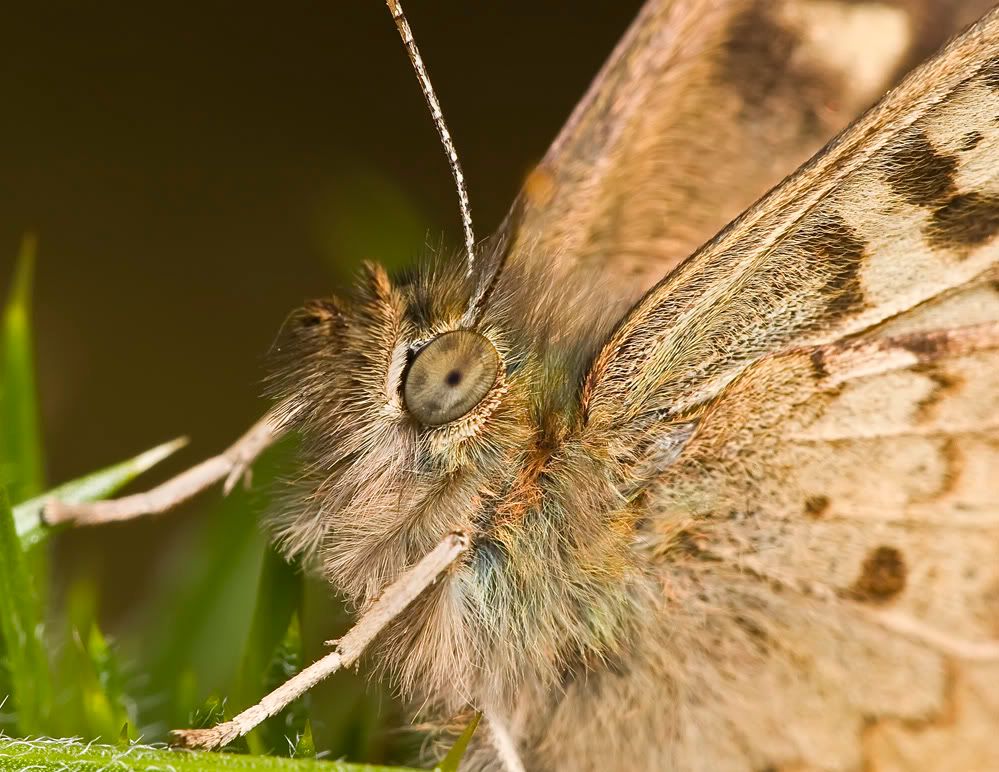I have been lucky enough to get a ticket for Green Down. One of the conditions is "No flash photography". I will obviously confirm to the rules.
I only occasionally use flash and have never experienced any adverse reaction from my subjects. What are the experiences of others?
Jack Harrison
flash
- Jack Harrison
- Posts: 4635
- Joined: Wed Jan 18, 2006 8:55 pm
- Location: Nairn, Highland
- Contact:
Re: flash
It seems an odd restriction...
Quite often flash photography is banned (along with tripods) purely to prevent people from taking professional quality photographs and capitalising.
I was out photographing Wall this evening and they did respond to the flash (they flew off!) but I can't imagine it did any damage.
Regards, Chris
Quite often flash photography is banned (along with tripods) purely to prevent people from taking professional quality photographs and capitalising.
I was out photographing Wall this evening and they did respond to the flash (they flew off!) but I can't imagine it did any damage.
Regards, Chris
- Pete Eeles
- Administrator & Stock Contributor

- Posts: 6779
- Joined: Tue Jan 17, 2006 6:10 pm
- Location: Thatcham, Berkshire
- Contact:
Re: flash
My understanding is that they're concerned that flash does disturb the critters - including mating pairs, hence the restriction.Chris wrote:It seems an odd restriction...
Cheers,
- Pete
Life Cycles of British & Irish Butterflies: http://www.butterflylifecycles.com
British & Irish Butterflies Rarities: http://www.butterflyrarities.com
British & Irish Butterflies Rarities: http://www.butterflyrarities.com
- Malcolm Farrow
- Posts: 56
- Joined: Sun May 20, 2007 9:14 pm
- Location: Suffolk
- Contact:
Re: flash
I use flash quite a bit and find that some species seem more sensitive than others. Speckled wood, for example, almost always seem to react to flash, usually moving before the shutter has fired (it may be that they even react to the imperceptible pre-flash outputs from the gun). However, even when disturbed they appear to behave normally afterwards, which suggests that the effect of the flash does them no harm. I just turn it off if a subject seems particularly sensitive but don't have any qualms about using it in the normal course of events.
Where there is particular conservation concern relating to disturbance, it's an entirely different matter, and it seems an entirely reasonable request to ask photographers to turn flash off. However, this may cause difficulties, particularly when taking photographs against the light or in very bright sunshine (dark shadows could be a problem) and a small white reflector might help to provide fill-in to balance the exposure - though you might need some help as it would be difficult to hold the camera and reflector at the same time. Given the close working distance, even a white shirt might help a little.
Good luck!
Malc
Where there is particular conservation concern relating to disturbance, it's an entirely different matter, and it seems an entirely reasonable request to ask photographers to turn flash off. However, this may cause difficulties, particularly when taking photographs against the light or in very bright sunshine (dark shadows could be a problem) and a small white reflector might help to provide fill-in to balance the exposure - though you might need some help as it would be difficult to hold the camera and reflector at the same time. Given the close working distance, even a white shirt might help a little.
Good luck!
Malc
Re: flash
[quote="Pete Eeles]My understanding is that they're concerned that flash does disturb the critters - including mating pairs, hence the restriction.[/quote]
Fair enough... perhaps they should also ban ants, spiders, small birds and other male butterflies as these too can disturb breeding pairs!
Fair enough... perhaps they should also ban ants, spiders, small birds and other male butterflies as these too can disturb breeding pairs!
- Trev Sawyer
- Stock Contributor

- Posts: 847
- Joined: Sun May 07, 2006 8:37 am
- Location: Cambridgeshire
Re: flash
I have yet to get to grips with flash photography for butterflies. At the risk of making this a huge thread, I reckon the vast array of expertise available from members on this site would make this an interesting topic for discussion here. I have, this week, been looking at the possibility of purchasing a flash (potentially even a ring-flash) for my camera for macro work. What tips would you give to a "flash virgin" about when to use it and how to go about it? I have a Canon 350D with built-in flash, but obviously this isn't much use when a reasonably large lens is fitted to it, as the flash coverage is probably in the shadow of the lens itself for close-up work. The number of dissappointing shots I've taken recently, many due to windy conditions, have led me to think about this subject a bit more.
Over to you.
Trev
Over to you.
Trev
Re: flash
As I see it, aside from the lighting issues, the main advantage of flash for macro is that it allows the use of small apertures to increase the depth of field. Another advantage, if using manual flash, is that you can always control the aperture by changing the ISO on the camera. Off for 10 days watching butterflies in Somerset today, hope the weather plays ball.
Will
Will
Will
Re: flash
Hi - I always use flash and have photographed pretty much most species using this method. The only species that seemed disturbed by it was Scotch Argus.
The advantage of flash is that I always get F14 as a minimum with absolutely no drawbacks - try getting that in natural light
The advantage of flash is that I always get F14 as a minimum with absolutely no drawbacks - try getting that in natural light
- Malcolm Farrow
- Posts: 56
- Joined: Sun May 20, 2007 9:14 pm
- Location: Suffolk
- Contact:
Re: flash
The problem with flash is that, if used badly, day-flying insects can appear unnaturally lit against a dark or even black background, sometimes giving the impression that the picture was taken at night! That said, I use flash for many of my insect photographs. The secret is to limit the flash output so that it provides enough light to fill-in any harsh shadows, but without dominating the exposure or drawing attention to itself. The ideal result is to have both the subject and the background naturally lit - so you need to balance the two light sources, flash and daylight. Fortunately, with most modern digital cameras, this is easy to do and with the Nikons that I use, it's simply a matter of using the camera's auto-exposure system while manually reducing the flash output, typically by between one and two stops - more for light subjects, less for dark ones. I always pre-set the aperture (usually in a narrow range between f10 and f13 - stop down any more and diffraction becomes an issue with AP-C size cameras) and then keep an eye on the shutter speed. If it becomes too slow and camera shake/subject movement becomes an issue, I increase the ISO setting to compensate.
I often turn the flash off completely for dragonflies and damselflies, because their bodies reflect the flash, producing unnatural highlights. I also turn it off for some butterfly shots, as previously mentioned.
I don't recommend ring flashes, macro systems such as the Nikon SB R1C1 or Canon Macro Twin Lite MT-24EX, or any direct light source. By far the best solution is to bounce the flash into a simple flash diffuser, such as a Lumiquest Ultrasoft. This softens the flash output and enables you to use the flash in a raised position with diffuser above - preventing the lens hood from casting a shadow and improving modeling. This technique produces excellent results at a fraction of the cost of fancy purpose-made macro-flash systems. Its only disadvantage is that it's always in a fixed position above the camera, although I seldom find this an issue.
There's a picture of the rig I use on the insect photography FAQ on my website: http://www.malcolmfarrowphotography.com ... y-faq.html
Hope this is helpful.
Best wishes
Malcolm
I often turn the flash off completely for dragonflies and damselflies, because their bodies reflect the flash, producing unnatural highlights. I also turn it off for some butterfly shots, as previously mentioned.
I don't recommend ring flashes, macro systems such as the Nikon SB R1C1 or Canon Macro Twin Lite MT-24EX, or any direct light source. By far the best solution is to bounce the flash into a simple flash diffuser, such as a Lumiquest Ultrasoft. This softens the flash output and enables you to use the flash in a raised position with diffuser above - preventing the lens hood from casting a shadow and improving modeling. This technique produces excellent results at a fraction of the cost of fancy purpose-made macro-flash systems. Its only disadvantage is that it's always in a fixed position above the camera, although I seldom find this an issue.
There's a picture of the rig I use on the insect photography FAQ on my website: http://www.malcolmfarrowphotography.com ... y-faq.html
Hope this is helpful.
Best wishes
Malcolm
Re: flash
I have started using flash for butterflies.I use FEC to try and balance the light and get better overall exposure.I also use a diffuser to try and prevent the flash being too harsh.Its difficult to get the balance correct sometimes.I use the flash for Dragonflies/Damselflies as well, the diffuser helps deal with the reflective nature of their bodies.....All of these were taken hand held which is another great bonus gained from using flash
40D,430EX flash,diffuser,Sigma 150mm macro.

same gear as above plus 20mm extension tube

same gear again(flash in manual with diffuser)

my setup

.
40D,430EX flash,diffuser,Sigma 150mm macro.

same gear as above plus 20mm extension tube

same gear again(flash in manual with diffuser)

my setup

.
- Dave McCormick
- Posts: 2388
- Joined: Fri Mar 16, 2007 8:46 pm
- Location: Co Down, Northern Ireland
- Contact:
Re: flash
Here is two shots I got earlier of a Speckled wood, one with flash and one without. As you can see, you get more detail with flash, but without flash, the speckled wood appears much darker and more like it did when I saw it. Which one do you guys prefer?
Flash Image:

f/19
Exposure = 1/200sec
ISO-200
Exposure Bias = -2 Step
Metering = Pattern
Flash
Handheld
No Flash Image:

f/7.1
Exposure = 1/500sec
ISO-250
Exposure Bias = 0 Step
Metering = Pattern
Handheld
Flash Image:

f/19
Exposure = 1/200sec
ISO-200
Exposure Bias = -2 Step
Metering = Pattern
Flash
Handheld
No Flash Image:

f/7.1
Exposure = 1/500sec
ISO-250
Exposure Bias = 0 Step
Metering = Pattern
Handheld
Cheers all,
My Website: My new website: http://daveslepidoptera.com/ - Last Update: 11/10/2011
My Nature videos: http://www.youtube.com/user/DynamixWarePro
My Website: My new website: http://daveslepidoptera.com/ - Last Update: 11/10/2011
My Nature videos: http://www.youtube.com/user/DynamixWarePro
